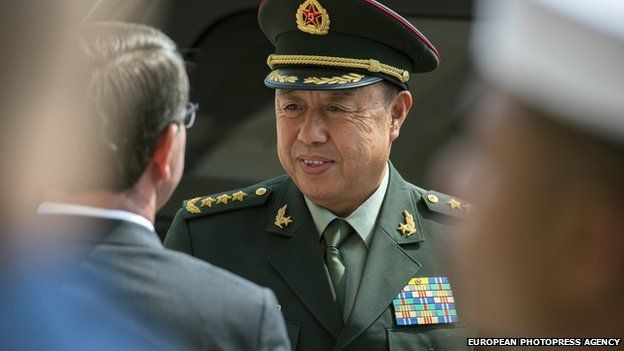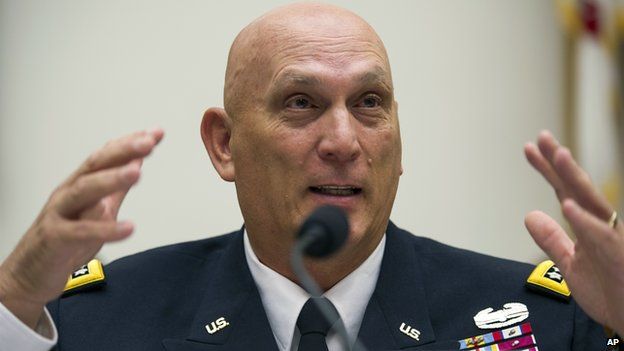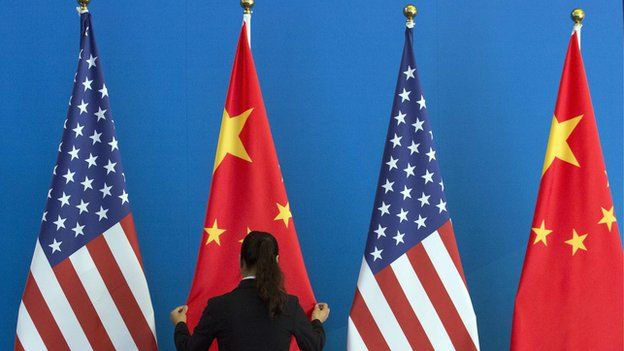Trying to avoid war, US and China build uneasy alliance
By BBC News
As US and China officials meet in Washington for high-level talks, the relationship between the countries is increasingly tense and awkward, even as they try to build an alliance.
America and China of are playing a high-stakes game in the South China Sea. Things are tense in Washington, too. 
US officials sound underwhelmed. (They "noted" the Chinese announcement, according to Reuters.) Still the timing is good - and is not accidental.
Next week Chinese officials will meet with Americans in Washington for a conference, the Strategic and Economic Dialogue. The subject of the South China Sea is likely to come up.
It'll also be on the agenda in September when President Xi Jinping of China comes to Washington.
Americans say the Chinese have created more than 2,000 acres (809 ha) of new territory in the South China Sea, claiming these areas as their own.

The islands will be used for military purposes they haven't fully explained.
The construction work has upset people in the Philippines, Vietnam and other countries in the region - and in the United States.
Americans have pushed back. Defense Secretary Ashton Carter says US warships and aircraft will continue to use the South China Sea, no matter what the Chinese say.
One US surveillance aircraft that made its way through the area carried a CNN crew, a manoeuvre by the US military that Cato Institute's Doug Bandow describes as "pretty provocative".

No wonder things between Chinese and American officials are tense.
You could see it in the faces of military officers who'd gathered one afternoon last week for an event at the National Defense University in Washington.
They were attending a ceremony that celebrated cooperation between the two militaries, American and Chinese. This includes combined efforts to provide assistance to victims of natural disasters.
Not everyone looked pleased, though. Before the ceremony began, a Chinese officer stood in the front of the room and stared at two empty chairs towards the end of the aisle.

The Chinese officer called over an American officer.
"We would like to propose that you put Gen Odierno and Gen Fan in the middle," he said.
The American officer said he didn't want to move the chairs. The Chinese officer looked at the chairs again. He said: "We don't think it's appropriate."
Someone took one of the nametags off a chair. You could hear tape being peeled from the fabric. The sticker was attached to another chair. The Chinese officer nodded. "That's good," he said.
An American officer in the back of the room said they try to be flexible.
"Like jazz," he said. "We improvise."

"Although there are times when our nations have differences, it's important that our countries come together," Gen Odierno said that afternoon at the National Defense University.
Still maintaining a balance of power is hard, and negotiations, whether over chairs or sea lanes, are marked by tension and sometimes silliness.
The Chinese and US officers who argued about the chairs brought to mind Stanley Kubrick's 1964 film, Dr Strangelove: "Gentleman, you can't fight in here. This is the war room."
Yet the Chinese have a point, says Andrew Oros, a professor at Washington College in Chestertown, Maryland, who writes about Asia security policies.
Americans are used to setting the agenda - and arranging the chairs.
Now the Chinese have something to say.
"China believes it is re-emerging as a dominant power, and it deserves respect," he says. "It asserts that in lots of ways, including the seating."
Close calls in the South China Sea

- March 2001 - Chinese fighter jet hits a US Navy EP-3 spy plane, and Chinese pilot Wang Wei dies
- December 2013 - Chinese warship comes close to a US guided missile cruiser, nearly crashing
- August 2014 - Chinese Su-27 fighter, doing a barrel roll to show its weapons, flies 10 metres from US Navy P-8 Poseidon aircraft
After the ceremony a US army official, Lawrence White, a deputy director of protocol, left the building. As he walked across the lawn, he recalled the stern faces of Chinese officers as they looked at the chairs.
"It's like, 'Breathe!'," he said. He threw out his arms and puffed air.
Good advice for those attending US-China meetings this summer and fall.


0 Comments:
Post a Comment
Subscribe to Post Comments [Atom]
<< Home